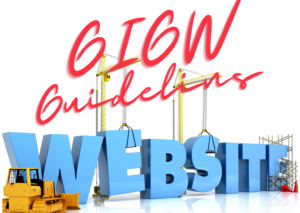Introduction
Today, writing a good content is not enough to enhance Google rankings. You need to follow good SEO strategies to win the race. Here, is our comprehensive guide on Content SEO Best Practices through which you can attain your goals efficiently. These strategies will surely help you in creating excellent content, engaging your targeted audience, and ranks higher on search engine results pages (SERPs). From keyword research to analytics to content promotion, here you will get every detail required for result-oriented SEO practices.
Keyword Research: Laying the Foundation
Categorize Your Target Keywords
When you begin writing the content, spot the targeted keyword is the most important aspect. You can list out the most relevant phrases, words and topics people can use to search any content. Targeted keywords are the specific words that are mostly used by people when searching for information related topics in search engines.
Take help of Keyword research Tools: You can use tools like Ahrefs, Google Keyword Planner, or SEMRush to search out the most related keywords of your subject.
Evaluate Competitors: Take a look and trace the targeted keywords of your competitors they are ranking for. You can gain traffic by targeting similar keywords.
Choose Long-Tail Keywords: Long-tail keywords are always a win. You should choose and include long tail keywords as they have higher conversion rates and lower competition.
Organize Your Keywords
After collecting all the targeted keywords, organizing and using them in proper way is important. You can divide them into primary and secondary keywords. Try to map them systematically into particular sections or subheadings of your content.
Primary Keywords: Primary keywords are the main keywords that you are targeting and want to rank. You should use these keywords in title, heading and in the body of the text in a proper way.
Secondary Keywords: Secondary keywords are the supporting keywords related to your main keywords that can be included in subheadings. With secondary keywords you can give relevance and strength to your content.
Create Engaging and Shareable Content
Write for Your Audience
To grab focus of your targeted audience, try to write engaging content addressing the interest and requirements of them including -
Use simple and clear language: Writing in a concise and clear way in easy-to-understand words is beneficial. Do not use complex sentences, jargons and difficult vocabulary.
Provide solutions for their questions: To get more attention, try to offer precise and comprehensive answers of common queries related to the topic you are offering.
Offer assistance: You can attract more audience by offering distinctive insights, or exclusive information and tips regarding the queries they have making your content different and unique from the competitors.
Formatting for Readability Formatting is very important for making it readable and easy for audience to find it useful. Use subheadings, numbered lists or bullet points for readers to get the information they want easily.
Evaluate On-Page SEO Elements
Titles and Headings
Use keyword-rich titles and headings that are both appealing and informative. These keywords should accurately reflect the idea of content and should be capable to encourage users to click and read more.
Meta Descriptions
Use primary keywords in your meta descriptions that are informative and compelling.
URL Structure
Target keywords should be included in your URLs. Your URLs have to be descriptive and clear. That aids search engines to recognize your content and enhances user but also improves user experience.
Internal and External Linking
For improved integrity, navigation and better user experience, you should include internal and external links. With the help of internal links, users can explore more content on your website. Additionally, external links can offer further resources from trustworthy sources.
Leveraging Visuals: Try to give visuals to your content. Use attractive Images and Diagrams effectively as this can enhance your content by breaking up huge blocks of wording. Choose relevant images to make your content impressive. Using high-quality, professional and visually appealing images is important. Reduce the size of the files for enhanced page loading time.
Promoting Your Content: Off-Page SEO
Build High-Quality Backlinks
Backlinks from authoritative websites can considerably perk up the search rankings of your content. To get the best and result-oriented backlinks, you can use these strategies –
Guest Posting write good content for relevant sites or blog pages so you can get good backlinks for your page. Influencer Outreach: you can take the help of influencers, making them share or include your content link. Content Sharing: Make better use of Social Media to increase reach of your content. You can enhance the visibility of your content by sharing, commenting, and other actions of social media platforms.
Use Analytics and Updates
Keep check on performance of the content
Monitoring and keeping track of the content is essential for improvement and better results. you can use Google Analytics or Ahrefs for measuring important metrics including bounce rate, organic traffic, and average time on page, etc.
Updating and Refreshing Your Content
Regularly update and refresh your content to maintain its relevance and accuracy. This includes adding new information, fixing broken links, and optimizing for the latest SEO best practices. So, include these tips and can make sure that your SEO content will always be valuable and remain highly ranked in search results. With time you need to add the changes and details to your content to keep it upto the mark.





